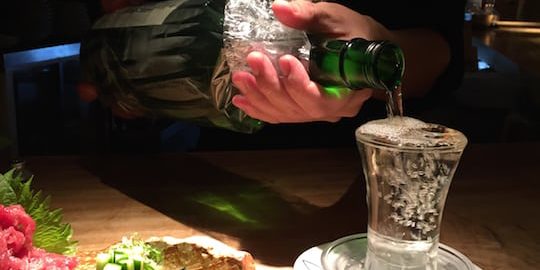I often say that the sake brewing industry is idiosyncratic in a myriad ways. One primary example is that, unlike businesses in other Japanese industries, sake breweries have almost always been family businesses, handed down from father to son (and more recently, to daughters, too), from generation to generation. Many can trace their lineage back two, three or even more than four hundred years.
Family owned businesses often march to the beat of a different drummer. Odd though it may seem, profitability and growth are not always the top priorities in such operations. Sure, they are important, but generations-old family businesses often have several revenue streams, stemming from ownership in other companies in industries unrelated to sake, or even large real estate holdings. This means that if one business in the enterprise–like sake brewing–is not that profitable, well, that’s okay.
“It’s been in the family for 300 years, we can’t really just shut it down,” goes one line of thought. “Even if it makes no money it functions as a calling-card, a marketing presence for our main business. People want to work with us because we are ‘that old sake-brewing family.’”
I think historically many brewers have been reluctant to either sell off or close down such old family businesses. The guilt would just weigh too heavily. But the reality of the times is catching up, and this attitude seems to be changing. While breweries do continue to close–we lose a handful or so each year–more kuramoto (brewery owners) are choosing to give up ownership and hand the reins over to another company rather than simply shut down operations.
Resistance is ebbing away, possibly embodied by the words of one brewer who sold his family’s kura (brewery) to another investor: “I just want this beautiful building, which for hundreds of years has been an anchor in the community, to remain in some capacity. That is enough.”
And so we hear more and more about old family-owned brands being taken over by other companies. Who does this taking over? There are several patterns.
At present, there are about five companies in Japan that buy up sake breweries that are in trouble. They then manage and help run them. Usually, they let the former president stay put and have the brewing staff keep brewing as they were, but the parent company then distributes the sake through its own channels. Such companies can then provide their customers with instant access to a lineup of ten to thirty breweries’ sake. The consumer doesn’t necessarily need to know what’s happening in the background.
Usually this works out fairly well. But there are other examples of M&As in the sake world where a large distributor buys up one or more breweries, or a company in a peripheral business acquires brewing operations. There are even two examples (to my knowledge) of overseas investors buying a sake brewery as well.
Of course, even if a new owner comes in, the realities are still the same. New owner or not, rice must be bought, good sake needs to be brewed, and it has to be marketed to its unique story and strengths. They still need to be competitive, and stand out in some way to be sold. It is naturally easier to address these challenges when financially stable.
Acquisitions continue because of this need. What is surprising is the pace at which it is happening. I have no precise data on this, but I seem to hear about it more and more.
I recently visited a region, a neighborhood, really, that is home to nine sake breweries. I learned that of the nine, only four were owned by the original families. The other five had been sold within the last few years. While it may seem less than romantic, in truth, if it were not for that, only four would currently remain.
In two of those where ownership changed, there was little to no visible difference in day-to-day operations. One more was just a front for the parent company’s craft beer operations; they were making very little sake. Another was making sake but had turned its focus from production to marketing via packaging and labels. The sake was fine, and the guy in charge certainly knew the industry well, but that seemed a bit hollow, actually.
The corporate ownership ratio in this area is far beyond the national average, but the sake brewery ownership landscape is changing and will continue to do so, making this example less unusual. While I would prefer to avoid the word, there is in fact a “shakeout” happening. Some breweries will do well, others not so much.
I am not at all against what is happening! It is inevitable, overdue, and more often than not such changes are beneficial. But they are eye-opening. While we all look at the larger trends of ginjô sales rising and cheap sake declining, beneath all that is this parallel state of change inside the sake world.






